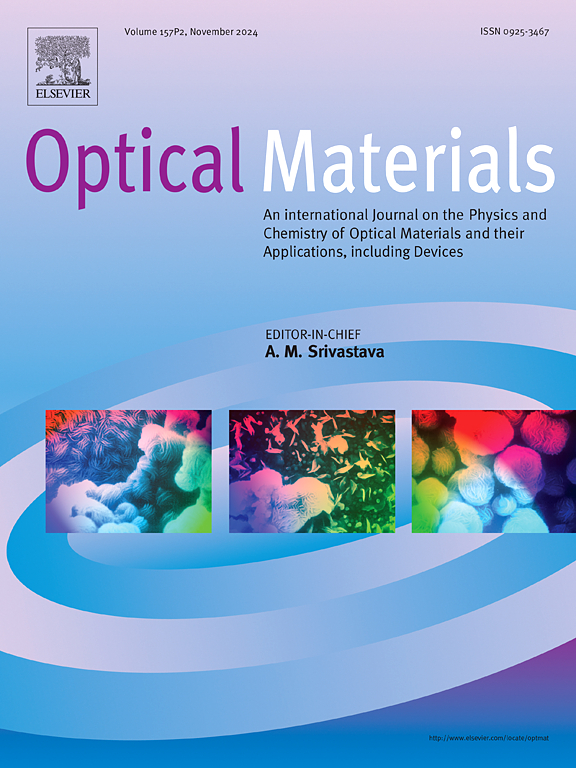Fluorescent alumina fibers: A fluorescent sensor for detecting trace amounts of water in organic solvents
IF 3.8
3区 材料科学
Q2 MATERIALS SCIENCE, MULTIDISCIPLINARY
引用次数: 0
Abstract
Water is a typical impurity in organic solvents, and the detection of trace amounts of water in organic solvents is of great significance both in the chemical field and industrial applications. This work described an innovative preparation method of rare earth europium (Eu3+) complexes being grafted on the surface of alumina fibers, which successfully prepared fluorescent alumina fibers and were used as fluorescent probes to detect water in organic solvents. The alumina fibers were prepared by electrostatic spinning, then the surface of alumina was modified by silane coupling agent (APTES) with maleic anhydride (MAH), and finally rare earth europium complexes was grafted on the surface of alumina fibers. The results showed that the rare earth complexes successfully grew on the alumina surface and bonded with –OH on the alumina surface. The addition of water resulted in an overall quenching of the fluorescence intensity of the fluorescent alumina fibers, with detection limits of 0.079 % v/v, 0.121 % v/v, and 0.062 % v/v in ethanol, DMF, and acetone solutions, respectively. This paper provides an innovative approach and methodology for the study of water content detection in organic solvents. This research broadens the potential applications of alumina fibers in functionalization.

求助全文
约1分钟内获得全文
求助全文
来源期刊

Optical Materials
工程技术-材料科学:综合
CiteScore
6.60
自引率
12.80%
发文量
1265
审稿时长
38 days
期刊介绍:
Optical Materials has an open access mirror journal Optical Materials: X, sharing the same aims and scope, editorial team, submission system and rigorous peer review.
The purpose of Optical Materials is to provide a means of communication and technology transfer between researchers who are interested in materials for potential device applications. The journal publishes original papers and review articles on the design, synthesis, characterisation and applications of optical materials.
OPTICAL MATERIALS focuses on:
• Optical Properties of Material Systems;
• The Materials Aspects of Optical Phenomena;
• The Materials Aspects of Devices and Applications.
Authors can submit separate research elements describing their data to Data in Brief and methods to Methods X.
文献相关原料
公司名称
产品信息
阿拉丁
Maleic anhydride (MAH)
 求助内容:
求助内容: 应助结果提醒方式:
应助结果提醒方式:


